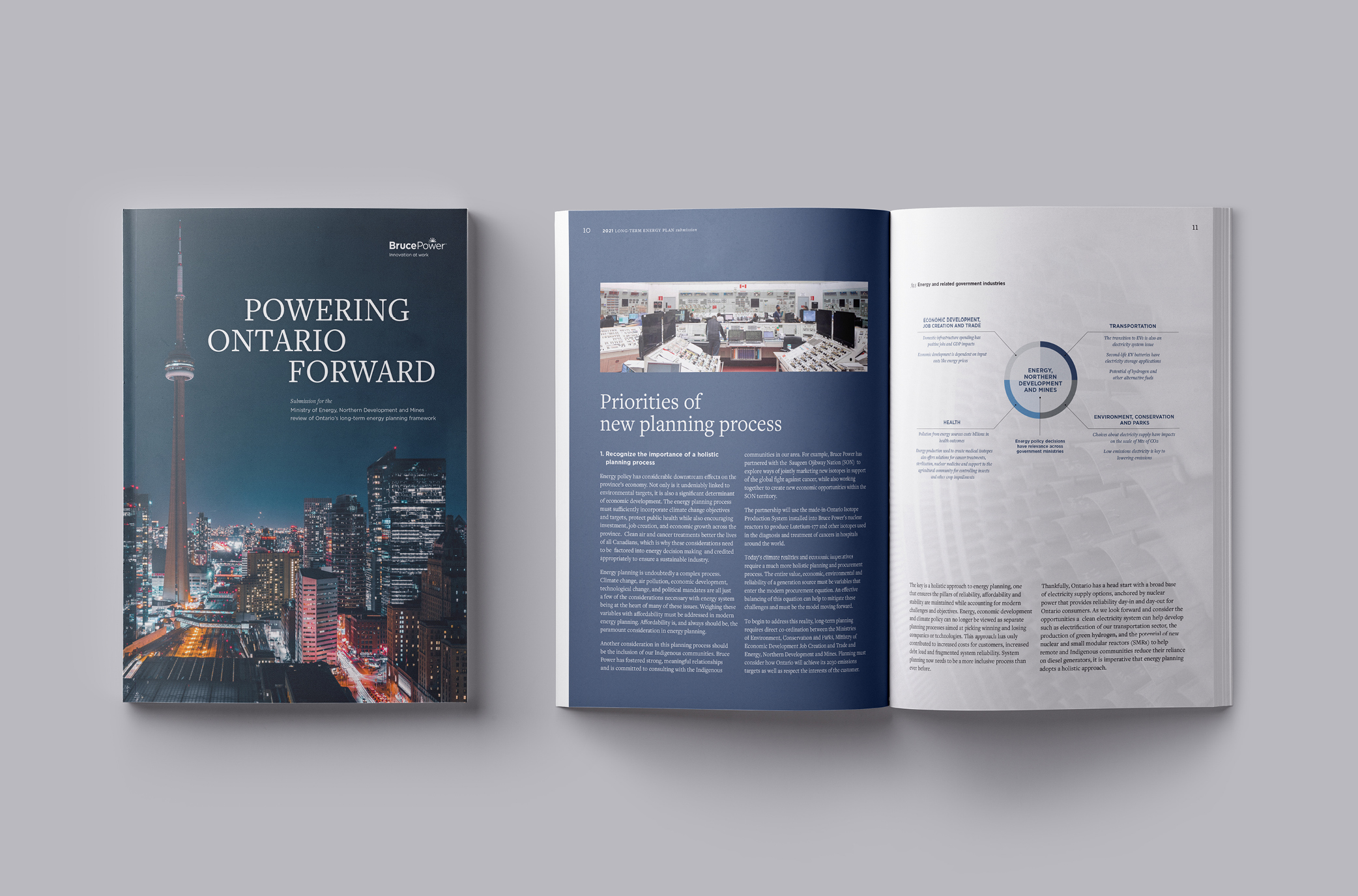Bruce Power was pleased to have the opportunity to respond to the Ministry of Energy, Northern Development and Mines (ENDM) review of Ontario’s long-term energy planning framework.
ENDM’s goals in reforming the approach to long-term energy planning are to promote transparency, accountability, effectiveness of energy planning decision-making, increase investment certainty and ensure the interests of ratepayers are protected. Bruce Power provided its expertise to assist in this process and is ready and able to help lead Ontario and Canada in its transition toward a net-zero future.
“At Bruce Power, our core business is supplying safe, reliable electricity to the people and businesses of Ontario, and medical isotopes globally,” said Pat Dalzell, Bruce Power’s Head of Corporate Affairs. “We have been a proud and active partner of the Ontario government for many years, helping the province to explore opportunities to use nuclear power to decarbonize its economy and achieve its climate change objectives, while planning for a reliable, affordable and stable electricity grid.”
Bruce Power’s vision for Ontario’s energy system respects the challenges of today but embraces the changes necessary to create the energy system of the future. The company’s consultation on the long-term planning process highlights four key principles:
- Recognize the importance of a holistic planning process. Energy policy is undeniably linked to environmental targets and is a significant determinant of economic development. The energy planning process must sufficiently incorporate climate change objectives and targets, protect public health while also encouraging investment, job creation, and economic growth across the province. Long-term planning requires direct co-ordination between the Ministries of Environment, Conservation and Parks, Economic Development, Job Creation and Trade, and Energy, Northern Development and Mines. Planning must consider how Ontario will achieve its 2030 emissions targets as well as respect the interests of the customer.
- Focus on long-term sector needs. Long-term climate change reduction policies, such as Ontario’s long-term emissions targets and the possibility of reaching a net-zero future, must be incorporated into energy planning. Thankfully, the Independent Electricity System Operator (IESO) is well positioned to provide this information and does so through its annual planning and capacity outlook documents.
- Leverage Ontario’s unique advantages. With a wide variety of clean energy options at its disposal, including zero-emitting nuclear and hydro facilities that provide the province with flexible baseload supplies, our needs are met through all four seasons. Combined, 94 per cent of Ontario’s electricity system is emissions-free. Branding Ontario as a decarbonized electricity sector is a major economic development opportunity, as firms based here can declare their operations in the province as ‘clean.’ This clean brand is already being supported by major organizations in Ontario making significant pledges to achieve net zero.
- Plan for and embrace innovation. Fundamentally, the government needs to create long-term policy that is flexible, but also provides the clarity and consistency needed to create private sector confidence to invest the considerable sums of capital that are necessary to realize innovation. Policy stability can be entrenched in energy planning to provide the long-term time horizon needed to create the environment that enables technological innovation.
“Bruce Power and nuclear power have been the stable backbone of Ontario’s electricity system for decades,” Dalzell said. “Thanks to investments being made into the Bruce Power site today, we will continue to reliably provide reliable, affordable, emissions-free electricity for decades.”
To read the full report, click here.


